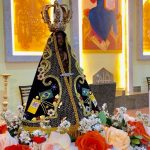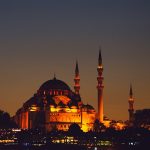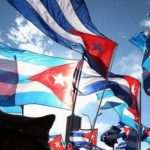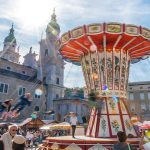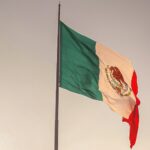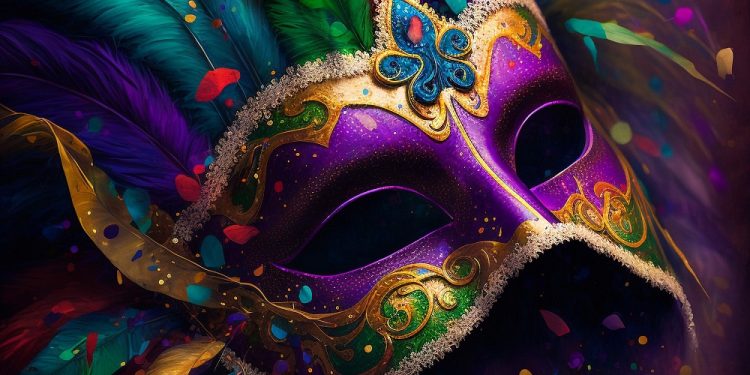
Carnival
Carnival is an exciting time for people all around the world. It’s a festival that happens in the days before Ash Wednesday. Traditionally, it’s been a time for people to indulge themselves before they begin Lent. Although this festival only lasts for a little while, it’s attended by many people and is a time for parties, parades, and good food.
Of course, while most carnival celebrations have quite a lot in common with one another, there are some key differences that can be explored, so let’s take a closer look at this holiday and its customs around the world.
The History Of Carnival
Carnival is a rich tapestry that contains elements from different religious practices, cultures, and historical influences around the world. Therefore, it can be difficult to come up with just one coherent history that will fit into the space provided for a holiday article of this size.
However, what we can do is use broad strokes when describing the history of this holiday to create a narrative that allows our readers to understand its evolution a little bit better. Carnival originally began as a way for people to let off some steam and indulge themselves before they had to begin the religious fasting associated with Lent.
The word itself comes from the Latin phrase “carne vale,” which means “farewell to meat.” This sums up the intention behind this holiday quite well. It was a time to eat meat and drink alcohol before those were forbidden for Lent. Over time, Carnival celebrations evolved according to the time and place where they were observed.
It quickly absorbed elements from African, European, and indigenous cultures throughout the world thanks to migration and colonization. This has resulted in very diverse rituals, dances, themes, and customs for Carnival celebrations around the world.
Carnival Celebrations Around The World
Let’s take a closer look at some of the ways that Carnival is observed around the world. Although it’s beyond the scope of this article to go into the minutiae of every single instance of this celebration, we can do a brief overview of each one that should shine some light on that country’s theme and execution of this holiday.
Brazil
The celebration of Carnival in Rio de Janeiro, the second most populous city in Brazil, is one of the largest in the world and attracts millions of people. This festival begins on the Friday before Lent and features costumes designed by samba schools that tie into a general theme. The grand parade also features floats and parades.
Denmark
Denmark begins with the tradition of Fastelavn on Shrove Monday. The word “Fastelavn” means “the evening before Lent,” and it features parades, children walking around neighborhoods collecting money (similar to Trick or Treat), and a game called “Beating the cat out of the barrel,” a game that features a colorful barrel filled with candy that’s hung and beaten by children until it breaks open, much like a piñata.
Norway
Norway also celebrates Fastelavn, but they do it starting on the Sunday before Lent. As in Denmark, children dress up and beg for money from neighborhood to neighborhood, and participate in the game “beating the cat out of the barrel.”
Panama
In Panama, Carnival Saturday kicks off the celebrations with energetic parades featuring beautifully adorned floats and vibrantly surreal costumes. The streets come alive with traditional music, dancing, and the infectious beat of drums. And, of course, there’s food such as spiral-cut sausages on sticks, and grilled chicken quarters to enjoy.
Curaçao:
Curaçao boasts an eclectic Carnival that spans an entire month, starting the month before Lent. The main events occur on Carnival Sunday and Monday. This is when the Gran Marcha (Grand Parade) and Marcha di Despedida (The Farewell March) are observed. The festivities showcase a fusion of African, European, and Caribbean cultures, featuring captivating parades, extravagant costumes, and vibrant music called “tumba.”
Dominica:
Dominica’s Carnival, known as “Mas Domnik,” is a colorful expression of the island’s rich heritage. Celebrated on Monday and Tuesday, it features a unique blend of African, French, and indigenous traditions. The festivities include lively street parades, steel bands, and vibrant costumes.
St. Barts:
St. Barts celebrates Carnival with a series of events, including parades, music, and dance performances. The festivities are marked by beautiful costumes and a joyous atmosphere that envelops the entire island. There’s also food such as stuffed crab, Mahi Mahi, and a variety of festival foods.
Andorra:
Andorra’s Carnival, known as “Carnestoltes,” features a mix of ancient traditions and modern festivities. Parades, street parties, and costume contests are held throughout the celebration, providing fun for all ages. And there’s plenty of food as well, including dishes such as Escudella, Embotits, and Coca Massegada.
Argentina:
Argentina’s Carnival, known as “Carnaval Porteño,” is celebrated in various cities, with Buenos Aires being the epicenter of the festivities. Colorful parades, lively music, and elaborate costumes fill the streets, showcasing the country’s vibrant culture. Celebratory foods served include Empanadas, Choripan, and Chimichurri.
Bolivia:
Bolivia’s Carnival, called “Carnaval de Oruro,” is a UNESCO Intangible Cultural Heritage of Humanity. Held on Saturday and Sunday, it features an impressive procession of dancers, musicians, and extravagant costumes, paying homage to indigenous Andean traditions. Foods include Rollo de Cerdo, Chicharrón, and Humintas.
Ecuador:
Ecuador’s Carnival is celebrated with a whole lot of enthusiasm in different parts of the country. Cities like Ambato and Guaranda host vibrant festivities, including parades, water fights, and the symbolic burning of “effigies” representing negative energies. And, of course, there’s food such as Guinea Pig, Morcilla, and Fried Pork.
French Guiana:
French Guiana’s Carnival, known as “Carnaval de Cayenne,” is a lively affair with a blend of African, Caribbean, and European influences. Colorful parades, costume competitions, and energetic music create a festive atmosphere for everyone to enjoy.
Trinidad and Tobago:
Trinidad and Tobago’s Carnival is a world-famous extravaganza filled with colorful calypso and Soca music, mesmerizing costumes, and wild street parades. The celebrations culminate on Carnival Monday and Tuesday with the renowned “Mas” competitions. Carnival foods include Fried Plantain, Corn Soup, and Pholourie.
Uruguay:
Uruguay’s Carnival, called “Carnaval,” is a cherished tradition that combines music, dance, and theater. The Murgas, a group of performers that present humorous and satirical acts during parades and competitions, add a unique touch to the amazing festivities.
Venezuela:
Venezuela’s Carnival is a lively celebration that varies across different regions. Elaborate parades, beauty pageants, and music festivals characterize the festivities. Locals and tourists alike immerse themselves in the vibrant atmosphere. Delicious foods served roadside often include Pabellón Criollo, Hallacas, and Tequeños.
Germany
Germany’s Carnival, known as “Fasching,” starts on Fat Thursday, known as Weiberfastnacht, and ends before Ash Wednesday. The big parades happen the weekend before and on the day before Shrove Tuesday. Sometimes celebrations also occur on Shrove Tuesday, especially in larger cities.
Australia:
Australia embraces the Carnival spirit with several different events, particularly in cities like Sydney, Melbourne, and Brisbane. Festivities include vibrant parades, street performances, and community gatherings. This is where people showcase their creativity through costumes and music and incredible food.
Canada:
Canada features the Le Carnaval de Québec, a Carnival that includes a snowman mascot (Bonhomme), an ice canoe race, and various other exciting festivities.
Haiti:
Haiti’s Carnival, known as “Carnaval des Fleurs,” showcases the country’s rich cultural heritage through vibrant parades, traditional music, and dance performances. Colorful costumes, intricate masks, and elaborate floats contribute to the festive ambiance. Foods include Beignets, Fresco, and the delicious Poulet aux Noix.
Liechtenstein:
Liechtenstein’s Carnival is very similar to Germany’s Carnival and is even known as “Fasnacht.” This Carnival is a magical celebration marked by processions, masked balls, and lots of music. The festivities provide an opportunity for locals and visitors to indulge in merriment and revelry. Foods served include Ribel, Dreikönigskuchen, and Schnitzel.
Slovenia
In many large towns, Shrovetide parades exist alongside other Carnival parades. These are colorful events that feature parade characters that have been passed down for generations. “Kurentovanje” is Slovenia’s version of Mardi Gras, and during this event, people can witness a variety of colorful masks and characters.
Portugal:
Portugal’s Carnival, known as “Carnaval,” is celebrated in various regions across the country, with the cities of Torres Vedras and Ovar hosting particularly famous festivities. Colorful parades, creative costumes, and festive street parties are some of the highlights of the celebrations.
Puerto Rico:
Puerto Rico’s Carnival, known as “Carnaval de Ponce,” is an extravagant event filled with music, dance, and elaborate masks. The streets of Ponce come alive with colorful parades, showcasing the island’s vibrant culture. Foods enjoyed include Mofongo, Lechón Asado, and Pasteles.
United Kingdom:
While the United Kingdom doesn’t have a widespread Carnival tradition, the city of Notting Hill in London hosts the vibrant Notting Hill Carnival. This multicultural celebration features vibrant floats, Caribbean music, and mesmerizing costumes, attracting all kinds of people from diverse backgrounds.
Czech Republic:
In the Czech Republic, Carnival, known as “Masopust,” is celebrated with lively processions, traditional dances, and colorful masks. This festive period allows people to revel in the joyous spirit before the arrival of Lent.
Angola:
Angola’s Carnival, known as “Carnaval de Angola,” is a lively celebration deeply rooted in the country’s cultural heritage. Colorful parades, traditional dances, and captivating music create an atmosphere of joy and unity. Delightful foods enjoyed during this carnival include Funge, Camarão Grelhado, and Banana Asada.
Lithuania:
Lithuania’s Carnival, known as “Užgavėnės,” is an incredibly unique and also very ancient pagan festival celebrated with a blend of surrealism, enthusiasm, and superstition. People wear masks and costumes, participate in processions, and enjoy traditional food, symbolizing the departure of winter and the arrival of spring.
Ecuador:
Carnival in Ecuador typically takes place in various cities and towns throughout the country, with notable celebrations occurring in cities like Ambato, Guaranda, and Esmeraldas. The festivities usually span several days leading up to Lent, with each region adding its own local flavor and customs to the celebrations.
United States:
In the United States, Mardi Gras is one of the biggest Carnival celebrations in the world. It features parades, masks, and plenty of debauchery for everyone to enjoy. Of course, there are other Carnival celebrations observed across the country. Some of the other exciting ones include the Miami Broward Parade in Florida, the St. Louis Mardi Gras, and the Philadelphia South Street Parade.
In Conclusion
As can be clearly seen, Carnival is celebrated in a variety of different countries and in different ways. And we’ve only begun to scratch the surface of this holiday. We encourage everyone reading to do their own research and find out about the Carnival holiday celebrations around them. For any of these celebrations, the hashtag #Carnival along with the name of the country can be used to spread the word about it.
